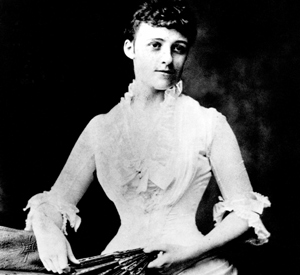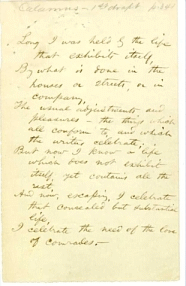Pale mothers were struggling with fretful babies, or trying to keep their older offspring from the fascination of the track; girls with their ‘fellows’ were giggling and shoving, and passing about candy in sticky bags; and older men, collarless and perspiring, were shifting heavy children from one arm to the other, and keeping a haggard eye on the scattered members of their families. (89)
This carefully detailed portrait of those waiting on the train platform is constructed in such a way to emphasize how busy and populated the city is, which contrasts with the bland and boring state of North Dormer. Listing occurs again on the very next page, this time providing scenic details:
The street swarmed with their fellow-travelers, with other excursionists arriving from other directions, with Nettleton’s own population, and with the mill-hands trooping in from the factories on the Creston. The shops were close, but one would scarcely have noticed it, so numerous were the glass doors swinging open on saloons, on restraints, on drugstores gushing from every soda-water tap, on fruit and confectionary shops stacked with strawberry-cake, cocoanut drops, trays of glistening molasses candy, strawberries, and dangling branches of bananas. Outside of some of the doors were trestles with banked-up oranges and apples, spotted pears and dusty raspberries; and the air reeked with the smell of fruit and stale coffee, beer and sarsaparilla and fried potatoes. (90-91)
Here again, Wharton mimics Whitman’s style in order to achieve a description of city life that makes use of listed details in such a way to emphasize a level of excitement and busyness associated with city life. Both examples enable the reader to recognize how Charity (like Whitman) acts as both an observer and one who longs to participate in city life. Both also bring me back to “Song of Myself.” I can’t help but sense a clear connection between Whitman’s seemingly endless catalogs and Wharton’s own presentation of details about Nettleton. Both suggest the vitality and productivity of city life—Whitman through his lengthy lists and Wharton through her lengthy sentences and carefully placed punctuation.
Work Cited
Wharton, Edith. Summer. New York: Bantam Classics, 1993.


